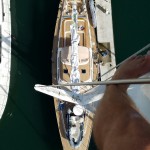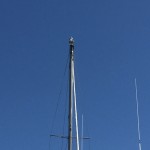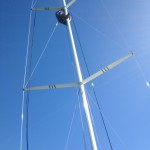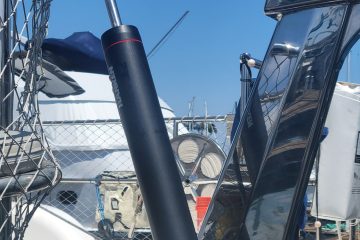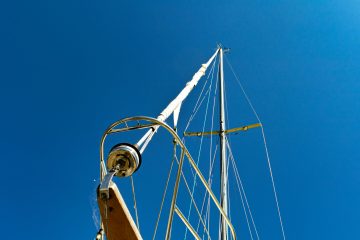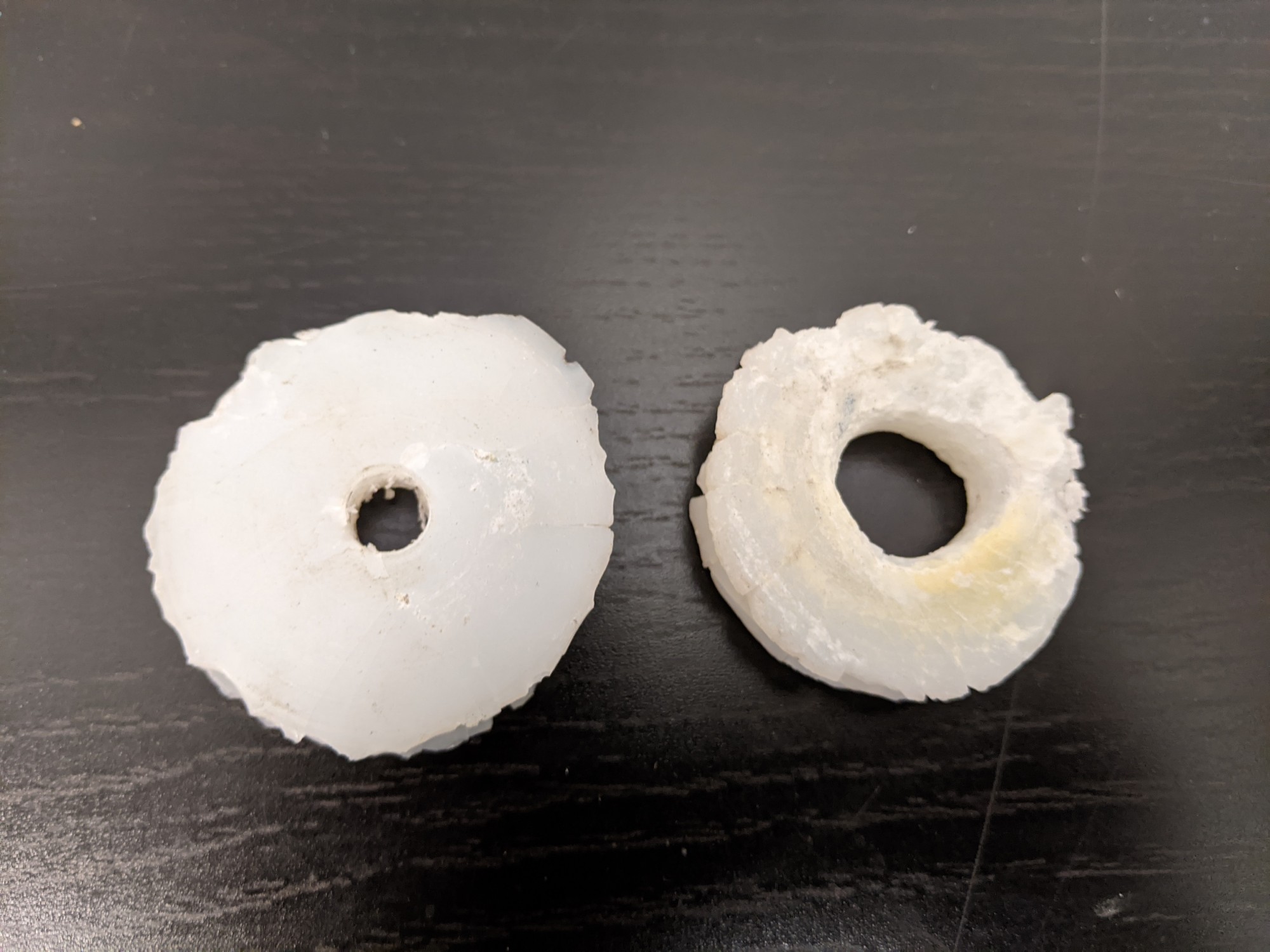Question: How do you get to the top of the mast?
From the Rigger: It is amazing how often we get this question. One of the realities that keeps us busy is that most people don’t feel comfortable hoisting themselves up a mast to retrieve a halyard, mount a wind instrument, replace a damaged sheave, inspect a spreader, polish shrouds, install bird spikes, etc. Whether your mast is 30’ or 80’, it can be a scary and dangerous trip, and our riggers take it very seriously.
When going aloft, we follow some basic rules and only use the best equipment.
Each of our riggers carries his own “Fall Systems”, the somewhat odd name for the gear we use to climb a mast. This system includes blocks, carabiners, cleats, a good chair with pockets and clips for tools, and a lot of rope. We use a 4:1 purchase so that our guys can hoist themselves up and down the rig, locking off at different heights as necessary. The only items we use from your boat are a halyard and a cleat, clutch and/or winch to hoist our gear and tie it off. And, yes, we check your equipment very carefully before we use it.
We usually don’t climb masts on boats smaller than 30 to 35 feet. Of course, our minimum requirement varies depending on the type of boat and the amount of ballast. A boat with a deep or heavy keel provides greater stability and makes climbing the mast easier and safer. Lighter boats are more of a challenge.
We only climb a mast if the boat is in the water. This allows us to take full advantage of the boat’s natural ballast to counter our weight at the masthead. A boat on land is too vulnerable to tipping for our liking. And, although silly, the guys feel better looking down over water than they do over concrete.
Finally, we don’t trust anyone . Thank you so much for offering to help, but we would really rather hoist ourselves. And you will make us feel much more secure while aloft if you stay away from the equipment/rope that we are using. Nothing worries a rigger more than someone messing about down below.
Obviously, if we can’t assure our safety, we will not climb a mast. If you don’t have a halyard that will get us safely to the masthead or if your rigging (including shrouds, forestay, turnbuckles, chainplates) looks questionable, we will ask you to take the boat to a local boat yard, and we will use a crane to reach the masthead. It costs more, but we think our riggers are worth it!
Are you interested, either by choice or necessity, in climbing your own mast? We have a number of adventurous clients who keep equipment on board to go aloft. If you have someone you trust to hoist you up your mast, two halyards and a good bosun’s chair may be all you need. If you rather hoist yourself, our Rigworks team can put together a Fall System that includes ropes (4:1 purchase), chair, blocks, horn cleat, carabiner, and storage bag. Fall Systems are not cheap but provide the safest option to pull yourself up your rig. Prices vary depending on the length of your mast. Call us here at Rigworks for a personalized quote.
The safety of our riggers and our clients is always our first priority. In our 25+ years in business, Rigworks has never had an injury, and we plan to keep it that way. So next time you see one of our guys hanging from the top of a mast, know that we have taken every precaution to protect them aloft.
